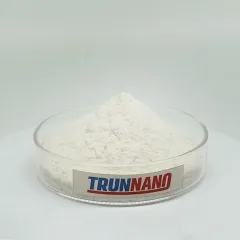- Home
- Products
- Elementary
- Boride Powder
- 3D Printing Powder
- Sulfide Powder
- Oxide Powder
- Carbide powder
- Nitride Powder
- Silicide Powder
- Hydride Powder
- Telluride Powder
- Selenide Powder
- Stearic Acid Series
- Phosphide Powder
- Nanoparticles
- Metal Alloy
- MAX Phase
- Lithium Battery Anode
- Surfactant
- Molecular sieves
- Concrete Admixtures
- Cladding of metals
- News
- Blog
- Contact
- About
Sodium Gluconate
One type of sodium polyhydroxy caroxylic acid known as sodium glutonate is sodium gluconate. This is a white or yellow crystal granule, or powder. It can be dissolved easily in water and alcohol.
Description about sodium gluconate:
Chemical structure: Sodium gluconate is a compound composed of glucose and sodium gluconate with the formula C6H11O7Na. It is a white or yellowish crystalline powder with a sweet taste similar to glucose.
Water soluble: Sodium gluconate has good water solubility and is easily soluble in water, forming a transparent, colorless solution. This property makes it widely used in food, medicine, chemical industry and other fields.
Stability: Sodium gluconate is stable in its dry state but may absorb moisture in humid environments. It has good heat and light stability but may decompose or deteriorate under high temperatures and prolonged exposure.
Sweetness and taste: Sodium gluconate has a mild sweetness that is slightly less sweet than sucrose but similar to glucose. It has a mellow, non-irritating taste and can provide good taste and sweetness in food.
Nutritional value: Sodium gluconate is a nutrient-rich compound that contains carbohydrates, sodium and water. It provides energy, participates in various biochemical reactions in the human body, and maintains normal physiological functions of the human body.
Pharmacological action: Sodium gluconate has a wide range of applications in medicine. It has diuretics, detoxification, energy supplements and other pharmacological effects, often used in the treatment of hyperkalemia, diabetic ketoacidosis and other diseases.
Fermentability: Sodium gluconate plays an essential role in the microbial fermentation process. It can be used as a nutrient and energy source for microorganisms to promote their growth and metabolism.

Applications of sodium gluconate:
In food, sodium gluconate can be used as a sweetener, moisturizer, nutritional fortifier, etc., to improve food's taste and nutritional value. It can also be used to make candy, chocolate, chewing gum and other foods to provide the desired sweetness and taste.
In the field of medicine, sodium gluconate can be used to treat diseases such as hyperkalemia and diabetic ketoacidosis. It has diuretic, detoxifying, and other pharmacological effects and is often used in clinical emergencies and treatment. In addition, sodium gluconate can be used as a nutritional drug to supplement energy, providing patients with a rapid energy supplement.
In the chemical field, sodium gluconate can synthesize other organic compounds, such as gluconate and glucuronic acid. These compounds can be used in medicine, food, chemicals and other fields.
In addition, sodium gluconate can be used as a raw material for microbial fermentation.
Production Method of sodium gluconate:
Glucose preparation: Sodium gluconate is derived from glucose, so glucose needs to be prepared first. Glucose can be obtained by starch hydrolysis, starch hydrolysis into glucose under acidic conditions, and then through separation, purification and other steps to obtain high-purity glucose.
Preparation of sodium hydroxide: Sodium hydroxide is an essential raw material in the synthesis process of sodium gluconate. A caustic soda solution can prepare sodium hydroxide, and the caustic soda solid is dissolved in water to obtain a sodium hydroxide solution.
Synthesis of sodium gluconate: After preparing glucose and sodium hydroxide, the synthesis of sodium gluconate can be carried out. The glucose and sodium hydroxide solutions are mixed according to a particular proportion, and the reaction is carried out under a specific temperature and pressure to produce sodium gluconate. The reaction temperature and time must be controlled during the reaction process to ensure a high-purity product is obtained.
Separation and purification: After the reaction, high-purity sodium gluconate must be obtained through the separation and purification steps. The commonly used separation methods include centrifugal separation, filtration, etc. The purification methods include recrystallization, ion exchange and so on. Through these steps, high-purity sodium gluconate crystals can be obtained.
Drying and packaging: The resulting sodium gluconate crystals are dried and packaged. The drying method can be vacuum, spray, etc., and the packaging is selected according to the product form and user needs.
Specifications of sodium gluconate
1. Use as cement setting retarder.
2. Used as a water-reducing agent.
3. Reducing slump losses
4. You can use it to make concrete for various projects, including hydraulic, marine and port.
It is compatible with various mortars.
Warnings about sodium gluconate
1. This product is not toxic and innocuous, it can be biodegradable. However, it cannot be eaten.
2. You should rinse it off with lots of water if it gets in your eyes.
3. A doctor should be consulted immediately if allergies are caused to any portion of the body.
Inquiry us
PREVIOUS Concrete Admixtures
Sodium-Thiosulfate-Na2S2O3
NEXT Concrete Admixtures